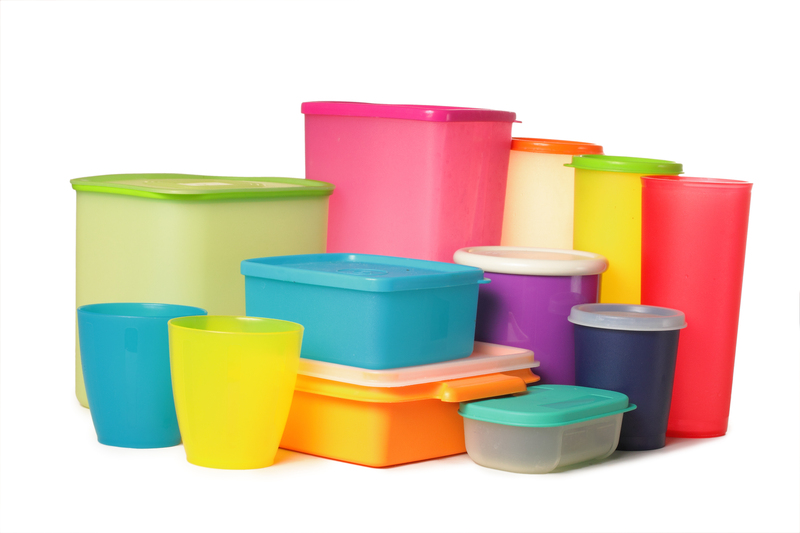Avoid These Plastics for a Greener Planet: A Comprehensive Guide
Taking steps toward a greener planet begins with conscious choices in our daily lives. One of the most significant changes you can make revolves around the types of plastics you use and avoid. This article will explore which plastics you should steer clear of, why they're harmful, and what eco-friendly alternatives are available.
Why Avoid Certain Plastics?
Plastics have revolutionized modern life due to their versatility and low cost, but not all plastics are created equal. Many plastics are non-biodegradable, leach toxic chemicals, or are difficult to recycle. Avoiding these plastics is crucial for protecting wildlife, human health, and our planet's future.

Understanding Plastic Types: The Resin Identification Code
Plastics are grouped into seven main categories, known as the Resin Identification Code (RIC). Each code, typically labeled as a number within a triangle on the bottom of containers, indicates the type of plastic. Some of these are safer and easier to recycle than others.
- 1 - PET or PETE (Polyethylene Terephthalate)
- 2 - HDPE (High-Density Polyethylene)
- 3 - PVC (Polyvinyl Chloride)
- 4 - LDPE (Low-Density Polyethylene)
- 5 - PP (Polypropylene)
- 6 - PS (Polystyrene)
- 7 - Other (Various Plastics, including polycarbonate and bioplastics)
Top Plastics to Avoid for a Greener Planet
While it's ideal to reduce your use of all plastics, some are especially damaging to the environment and human health. Here is a guide to plastics you should avoid for a more sustainable lifestyle:
1. Polyvinyl Chloride (PVC) - Plastic #3
PVC is widely used in pipes, clear food packaging, toys, and medical equipment. It is notorious for its toxic additives, including phthalates and heavy metals. These substances can leach into food and the environment as the plastic ages or is improperly disposed of.
- PVC releases dangerous chemicals like dioxins during production and incineration.
- It is rarely recycled due to the complex mixture of additives.
- Avoid PVC in food wrappers, cling films, and products that come into contact with heat or direct sunlight.
2. Polystyrene (PS) - Plastic #6
Polystyrene, also known as Styrofoam, is commonly found in disposable coffee cups, takeout containers, packing materials, and plastic cutlery. Although lightweight and insulating, it poses significant environmental risks.
- Polystyrene breaks down into microplastics, which are nearly impossible to clean up.
- It is not accepted in most curbside recycling programs.
- Production and breakdown release styrene, a possible human carcinogen.
- Avoid using foam plates, cups, and takeout boxes whenever possible.
3. Other Plastics (Including Polycarbonate; #7)
Plastic #7 is a catch-all category that includes polycarbonate, polylactic acid (PLA), and other blended plastics. Polycarbonate often contains BPA (bisphenol A), a chemical linked to hormone disruption.
- #7 plastics are very hard to recycle, as sorting and processing are complex.
- BPA can leach into food or drinks--especially when containers are exposed to heat.
- Avoid polycarbonate water bottles, baby bottles, and containers with recycling code #7.
4. Single-use Plastics
Single-use plastics, regardless of their resin code, are designed for one-time use and are rarely recycled. These include:
- Plastic straws
- Plastic bags
- Cutlery and plates
- Stirrers and coffee pods
- Six-pack rings
*Single-use plastics are among the top polluters found during beach cleanups worldwide, harming marine and terrestrial animals alike.
The Hidden Dangers: Microplastics and Chemical Leaching
Over time, many plastics break into microplastics, tiny fragments less than 5 millimeters long. These particles infiltrate soil, waterways, and even the food chain, posing serious risks to wildlife and human health. Additionally, plastics like PVC and polycarbonate can leach toxic chemicals, such as dioxins, phthalates, and BPA, which have been linked to cancer, reproductive issues, and developmental disorders.
Environmental Impact of the Most Dangerous Plastics
- Ocean pollution: Single-use plastics and polystyrene comprise a large share of marine debris, endangering turtles, birds, and fish.
- Landfill overflow: Plastics can take hundreds of years to degrade, crowding landfills and seeping toxins into the soil.
- Harm to wildlife: Animals ingest or get entangled in plastic debris, leading to injuries, starvation, or death.
Sustainable Alternatives: Choose These Instead
The good news is that for every plastic to avoid, there are eco-friendly alternatives that have a lower environmental impact. Here are some easy swaps for a greener lifestyle:
- Reusable bags made from cloth, jute, or recycled fibers instead of single-use plastic bags.
- Stainless steel, glass, or aluminum bottles and food containers in place of disposable plastic counterparts.
- Bamboo, wooden, or metal utensils as a substitute for plastic cutlery.
- Wax wraps and silicone lids rather than plastic cling films.
- Compostable plates and cups made from cornstarch or sugarcane.
What About Bioplastics and Compostable Plastics?
While bioplastics and compostable plastics are increasingly marketed as sustainable, they are not always the green silver bullet they seem. Many require industrial composting facilities that are lacking in most regions and may not break down properly in nature, adding to litter and pollution. Always check local guidelines before using these alternatives.
How to Identify and Avoid Unsafe Plastics in Daily Life
Becoming aware of which plastics to avoid and taking proactive steps can have a ripple effect on the environment. Here are actionable tips you can apply daily:
- Check the recycling codes: Flip containers over to find the triangle symbol and number. Generally avoid #3 (PVC), #6 (PS), and #7 (other/mixed).
- Say no to single-use plastic: Refuse plastic straws, bags, and packaging when offered.
- Purchase in bulk: Buy dry goods, cleaning supplies, and snacks in bulk to reduce packaging waste.
- Shop local: Support markets and stores that use minimal or plastic-free packaging.
- Participate in recycling programs: Learn what is accepted in your area and properly clean and sort your recyclables.
Myths vs. Facts: Common Misconceptions About Plastics
-
Myth: All plastics are recyclable.
Fact: Most municipal recycling programs only accept certain types, typically #1 (PET/PETE) and #2 (HDPE). PVC, PS, and #7 plastics are rarely recycled due to technical or economic barriers. -
Myth: Biodegradable plastics always break down naturally.
Fact: Many so-called biodegradable plastics require specific industrial conditions (high heat, moisture, and microbial activity) to decompose and can persist in landfills or the environment. -
Myth: Using plastic once doesn't harm the environment.
Fact: Every piece of plastic ever made still exists in some form. Single-use plastics can cause disproportionate harm relative to the short service life they provide.
Global Movement: How Legislation Helps Reduce Harmful Plastics
Many countries and cities are adopting strict measures to reduce the use of problematic plastics. Examples include:
- Plastic bag bans: Nations like Kenya and Bangladesh have barred lightweight plastic bags to minimize pollution.
- Polystyrene bans: Cities such as New York and Sydney have outlawed foam food containers.
- Extended producer responsibility (EPR) laws: Producers are held accountable for the lifecycle of their plastic products, encouraging innovation in sustainable design.
Supporting these initiatives as a consumer encourages more companies and governments to make green choices.

Conclusion: Your Role in Creating a Green Future
The journey toward a greener planet starts with everyday decisions. By choosing to avoid harmful plastics--particularly PVC, polystyrene, polycarbonate, and single-use items--you protect ecosystems, reduce personal health risks, and contribute to a cleaner, healthier world.
Every small action matters. Share knowledge, challenge businesses to improve packaging choices, and support policies aimed at reducing plastic use.
Let's work together to replace problem plastics with eco-friendly alternatives and build a more sustainable future for generations to come.
Frequently Asked Questions
Q: Which plastics are the most harmful to avoid for the environment?
- PVC (#3)
- Polystyrene (#6)
- Polycarbonate and other #7 plastics
- Single-use plastics of all kinds
Q: How can I safely avoid plastic in daily life?
- Bring your own reusable bags, bottles, and containers.
- Select products packaged in glass, metal, or paper.
- Shop at bulk stores or farmers markets when possible.
- Say no to plastic straws and cutlery.
Q: Do all plastics leach harmful chemicals?
No, not all plastics leach dangerous substances, but certain plastics like PVC, polystyrene, and polycarbonate are prone to releasing toxins, especially when exposed to heat or sunlight.
Ready to make a change? Start today by avoiding the worst plastics for the planet and inspiring those around you to join the movement for a greener, cleaner Earth.